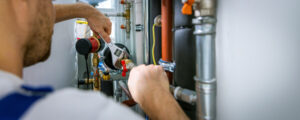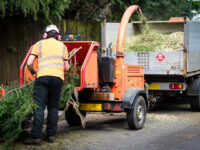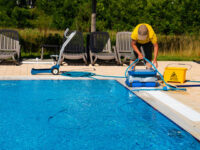What Is Plumbing?
Plumbing is a term that refers to the equipment used for conveying fluids and water. It includes pipes, valves, and plumbing fixtures. It also involves the installation and maintenance of these apparatuses.
The plumbing system is a set of pipes and fittings used for the delivery and disposal of water and other liquids. Various types of pipes are used, such as copper, HDPE, CPVC, and GI.
One of the most important components of the plumbing system is the drain. A drain is a primary vessel for the discharge of waste liquids. It also enables the waste to be funneled into a more suitable area, such as a receptacle.
A clogged drain can lead to the overflow of sewage, which can affect your health. Bacteria and other contaminants build up in the sludge and can result in diseases. A properly designed drain can prevent this from occurring.
There are many different types of drains, and some are more effective than others. For instance, a recirculating pump can create a suction entrapment that can be a hazard. This is where a professional plumber can come in handy.
Aside from removing clogs, a good plumber will also inspect your plumbing to make sure that there are no more problems. This will help keep the system running smoothly and safely.
A good plumbing service can be contacted at any time. They are trained and experienced in handling complicated plumbing issues. In addition, they can provide maintenance services on your residential or commercial property.
If you have problems with your drainage, it’s a good idea to use a drain snake. It’s not something you should attempt to do yourself.
Plumbing pipes are used to carry water and other fluids in different applications, such as in a home or a commercial building. They are also used to convey waste. They are fabricated from a variety of materials, including copper, steel, plastic, and PEX.
Service pipes are used to connect buildings to municipal services and sewage systems. They are typically large and can be shaped or sized according to local building codes.
Service pipes are not only used for carrying water and other liquids but can be used to connect to gas, steam, and other types of fluids. They can also be fitted with a shutoff valve that will allow you to close off the service pipe in the event of an emergency. The valve can be automatic or manual.
There are several different types of pipes, but the most important is the PEX. This type of pipe is flexible and easy to install. It is often used in plumbing and is a great solution for tight spaces.
The ABS pipe is another option. This is a polymer plastic pipe that is similar to a PVC pipe. It is durable and is able to withstand cold temperatures. It is also corrosion-resistant. It is also quite affordable.
In the early twentieth century, materials such as cast iron and terra-cotta were commonly used. But today’s piping industry is more varied. It now utilizes a variety of materials, including copper, ABS, PEX, and steel.
CPVC and UPVC are two types of plastic pipes used in plumbing. They are both durable materials, but they have different structural qualities. Each has its own merits and disadvantages, and it’s important to understand the differences between them.
CPVC is known for its good resistance to chemical degradation. Its mechanical strength is also good, which makes it a great material for piping. UPVC is rigid and offers good chemical resistance, but it isn’t as tough as CPVC.
UPVC and PVC are made from polyvinyl chloride (PVC). The term UPVC refers to an unplasticized version of PVC, which is more flexible. It is less flammable and has excellent anti-corrosion properties. It can withstand temperatures of up to 65 degrees Celsius. It is also resistant to corrosive fluids.
While both UPVC and CPVC are made with a combination of additives and plasticizers, UPVC is not processed with lead. This is because lead is an inexpensive additive that can leach out. It also can poison potable water.
CPVC is also processed with plasticizers, which makes it softer and more flexible. The resulting pipe is softer and has a smoother inner wall.
It is often used in swimming pools, fire sprinkler systems, and drainage systems. It is also used to transport non-potable water. It is a popular choice for many plumbing applications, though it is not often used in window frames.






